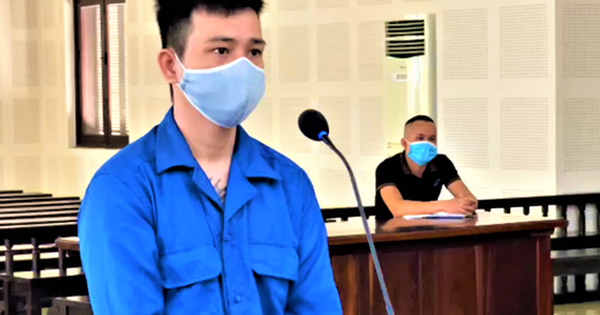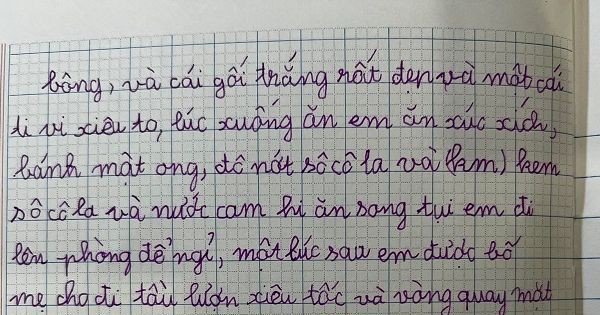National treasures
According to records kept at the National Museum of History, the Manh Mon Ha seal was discovered in 1962 in Huong Giang commune, Huong Khe district, Ha Tinh province. Currently, the seal is kept and displayed at the National Museum of History.
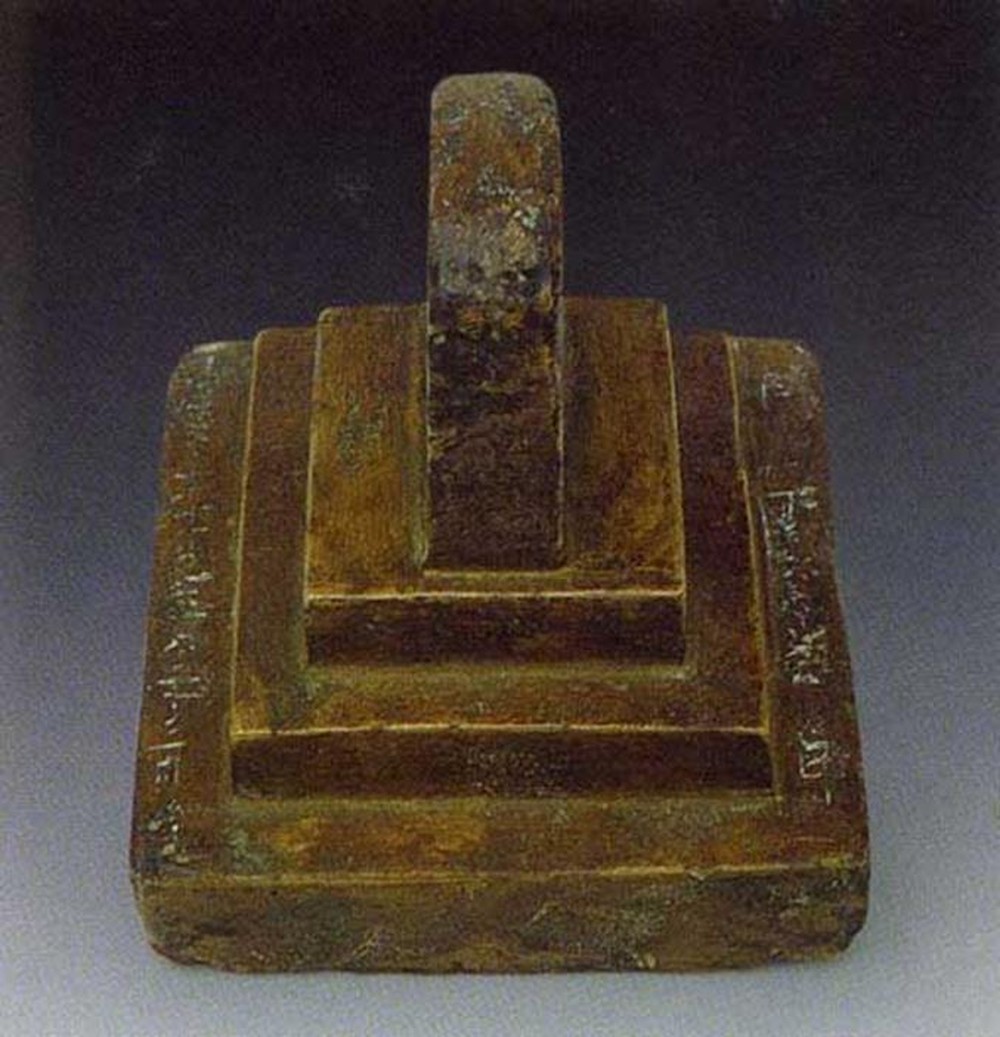
The top of the seal (photo: National Museum of History)
Press the square, creating three overlapping levels. The knob creates a rectangular shape with a curved top, like a stone stele. The two sides of the back are engraved with two lines of Chinese characters.
On the right, there are 4 letters, transliterated: “Mon Ha Hall seal” (the seal of the Mon Ha lobby). On the left is engraved 11 words, transliterated: “Long Khanh five years five moons two thirty three days created” (made on May 23, 5th year of the Long Khanh era, King Tran Due Tong’s reign, 1377). The face is square, measuring 7.3cm x 7.3cm, engraved with 4 Chinese characters in the style of the seal “Mon Ha Hall Seal”.
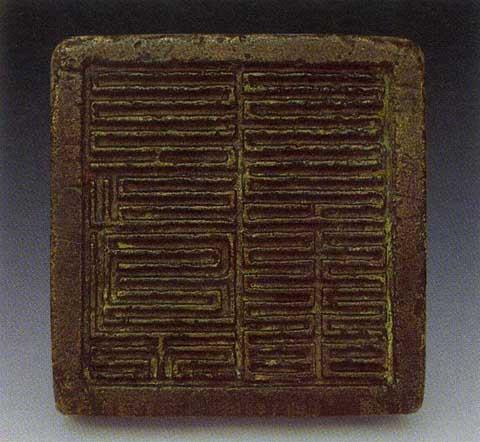
Underside of seal (photo: National Museum of History)
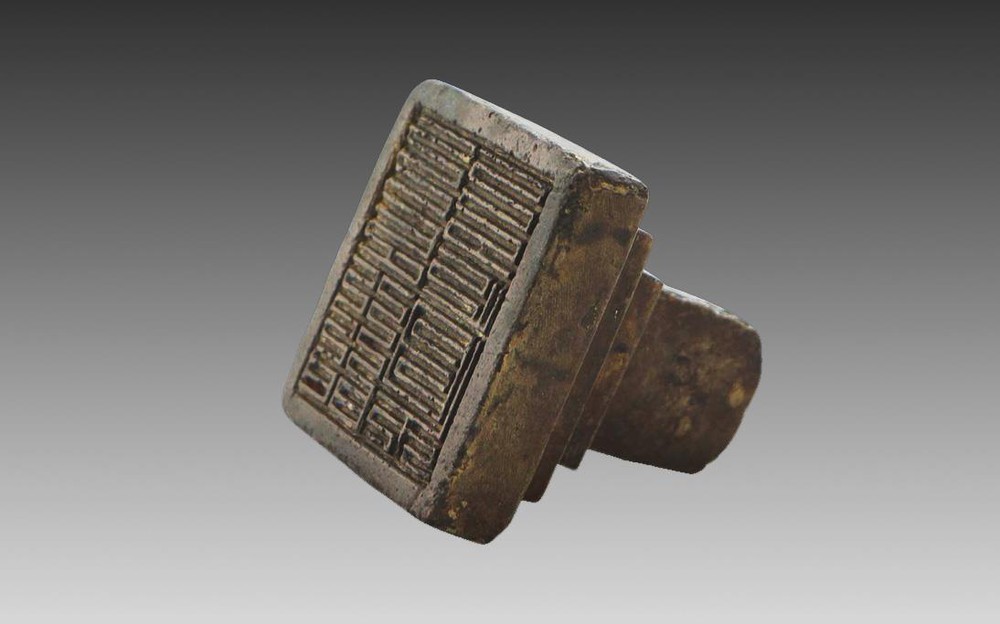
The oblique side of the seal (photo: National Museum of History)
According to information introduced at the National Museum of History, “Mon Xia Hall Seal” is the only known Tran Dynasty seal. The seal has clear content, specific dates, related to the administrative history of the Tran dynasty. These are the three highest organs of the Tran dynasty.
The Monxia Hall is an agency in the “Three Halls” of the central government, including 3 halls: Thuong Thu, Trung Thu and Mon Ha – a close agency of the King, responsible for keeping the seal, transmitting the king’s orders to the mandarins and ceremonial work in the palace. This position is held by talented angels. “Mon Ha Lonh seal” was used to stamp on important administrative documents of the court from the reign of Emperor Tran Phe De onward.
With typical historical values, “Mon Ha Long Seal” has been recognized as a National Treasure under Decision No. 1426/QD-TTg dated October 1, 2012 of the Prime Minister.
“Language Gate”
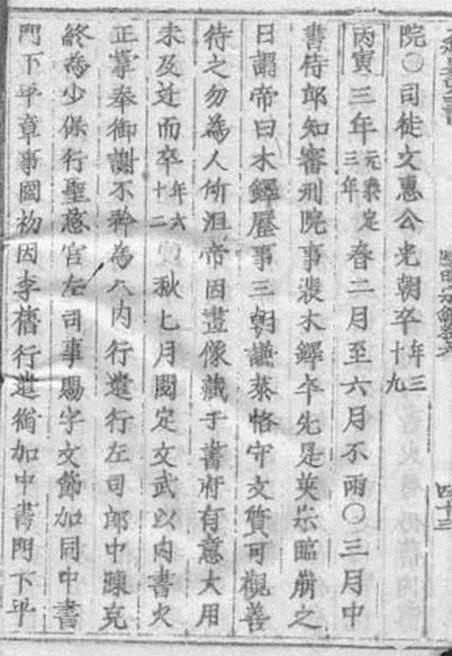
Records of Dai Viet Su Ky Toan Thu on Ly Thuong Kiet’s rank, including “Dong Trung Thu Mon Ha Binh Chuong Su” (Institute of Han Nom)
As mentioned above, the Monxia Hall is one of the “Three Halls” including the Thuong Thu, Trung Thu, and Mon Ha – the three leading agencies of the court. This is a calling and organization originating from the Sui dynasty in China.
In the courts of the Sui and Tang dynasties in China, the Monxia Hall had the authority to verify the contents of the edicts issued. In the Song Dynasty, the two halls of Trung Thu and Monxia were often combined into the same place, so it was called “Dong Trung Thu Mon Ha”.
In Vietnam, the Ly, Tran and early Le dynasties had references to the regimes of the Tang and Song dynasties, so the Mon Ha hall also appeared. The name Mon Ha appeared earliest in history books about the Ly dynasty.
Dai Viet Su Ky Toan Thu recorded that in the Ly dynasty, Ly Thuong Kiet was conferred as Phu Quoc Thai Pho, Dong Trung Thu Mon Ha Binh Chuong Su, Khai Quoc Cong …
At the beginning of the Tran Dynasty, according to the old regulations of the Ly Dynasty, Hanh Khien function received the title of Trung Thu Mon Ha Binh Chuong Su. The name of the Mon Ha hall last appeared in Vietnamese history books as recorded by Dai Viet Su Ky Toan Thu about the reign of King Le Thanh Tong.
History of wandering
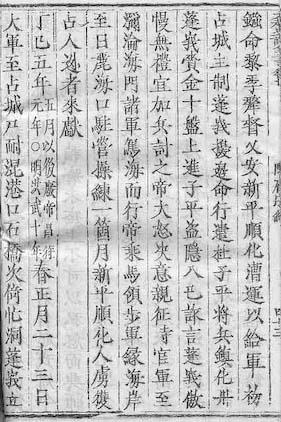
Records of Dai Viet Su Ky Toan Thu about the 5th year of Long Khanh (Han Nom Institute)
The Mon Ha Seal was discovered in Huong Giang Commune, Huong Khe District, Ha Tinh Province in 1962. This discovery site has left a big question: The Mon Ha Hall is a powerful agency next to the Emperor, so why? Why was this important seal discovered in Ha Tinh – about 400 km from the center of Hanoi today – but not in the Imperial Citadel of Thang Long or the “capitals” of the Tran Dynasty such as Nam Dinh, Thai Binh or Quang. Ning?
The seal itself, with only 19 Chinese characters, does not provide too much information about the relationship between the artifact and the place of discovery.
However, if you turn back the pages of the history of the Tran dynasty, and at the same time compare it with the line “Long Khanh five years, five moons, two decades, three days of creation”, the contemporary context will be somewhat clarified.
Dai Viet Su Ky Toan Thu recorded: “Dinh Ty, Long Khanh in the 5th year. In the spring of January, the 23rd, the army advanced to Thi Nai gate of Champa, up to Thach Kieu, stationed at Mang cave.. . King [Trần Duệ Tông] dressed in black, rode a Ne Thong horse, sent Ngu Cau Vuong Huc to wear a white shirt, ride a white horse, and command the army to advance… In the time of the Snake, the army was broken. The king was caught in the battle and then ice… That day in the capital, it was dark during the day, the market had to light torches to buy and sell…”
It can be seen that the 5th year of Long Khanh for the Tran Dynasty was not a peaceful time. King Tran Due Tong personally led his army to fight Champa but was surrounded and died in battle. Although it is engraved with the Long Khanh date of King Tran Due Tong, in fact, in May of this year, his successor, Tran Phe De, ascended the throne.
In the 13 years from this point, many attacks by Champa against the Tran Dynasty took place, ending only in 1390 with the Battle of Hai Trieu. At the same time, despite winning the battle of Hai Trieu, the Tran Dynasty did not last long, but was officially replaced by the Ho Dynasty in 1400.
* Reference: National Museum of History, Institute of Han Nom
at Blogtuan.info – Source: Soha.vn – Read the original article here

